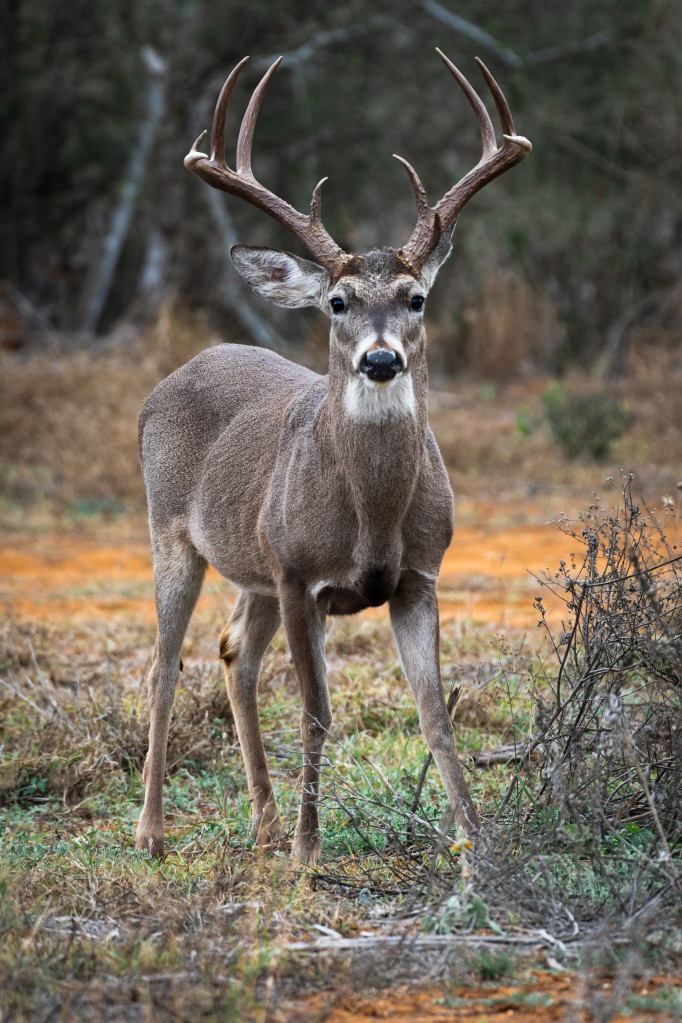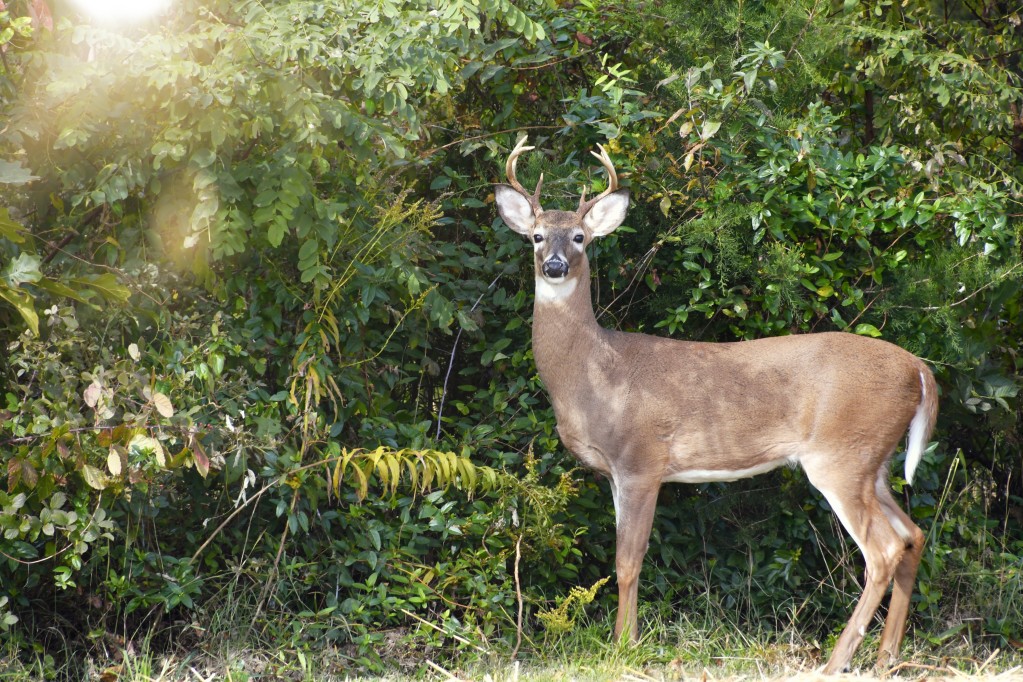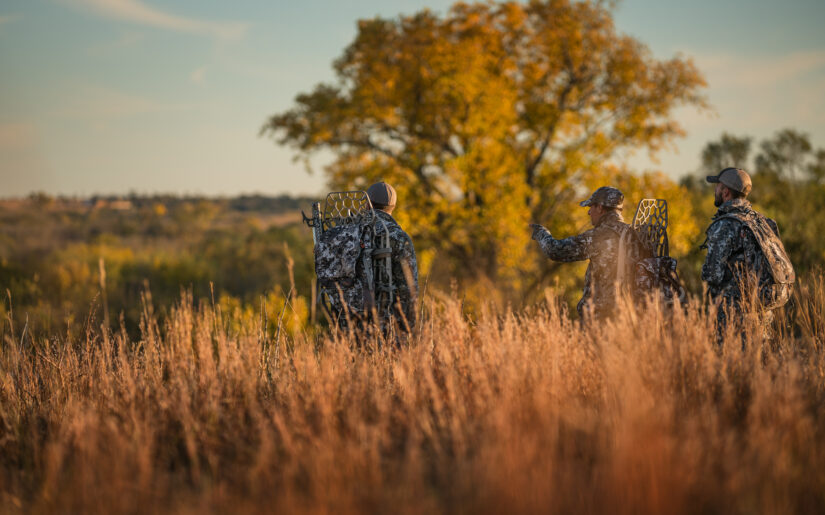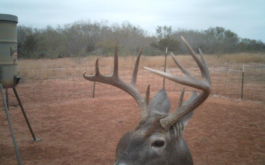It’s 5:00am and your alarm sounds. The sun has yet to break over the horizon as you pull on your camo and boots and pour a pot of hot coffee into your thermos. It’s whitetail season and you’re ready to take down the big one! You stop to check the forecast for the day. There’s a moderate wind expected. What do you do? If you’re a legacy hunter, using knowledge passed down through generations you may hear the words of your Grandad telling you that “whitetail just don’t move in the wind” – but is it true? We’re breaking down the schools of thought around hunting whitetail in the wind – from the scientific data to real-world observation. There are certainly some disadvantages to hunting in the wind, but is lack of whitetail movement one of them?

Do whitetail move in the wind?
Ah, the million dollar question: how do deer act when it’s windy outside? A lot of hunters have long thought that deer move less on windy days, but that might not be true. Penn State University has conducted studies on how wind speeds affect whitetail movement, and what they have found may surprise you. The data shows that whitetail, especially bucks, move more during windy days than calm ones. They do tend to move less on windy nights, however. Wind during the night decreases their ability to hear possible predatory danger, and therefore they may choose to stay bunkered down until their visibility improves with the daylight. Deer typically feed five times in a 24-hour period. This means that if they have chosen to stay put on a windy night, they will be foraging come daylight, regardless of windspeed.
Hunting tip: Pay attention to the forecast 24-7. If a weather system moves through Tuesday evening, and whitetail activity is diminished, you can expect a higher concentration of feeding whitetail come Wednesday morning.
Another reason you might find an increase in buck movement on moderately windy days is because a moderate wind increases their scenting distance. It’s not uncommon to find a buck cruising the downwind edge of a brushy area, allowing them to scent over 100 yards upwind at a time very efficiently. A still day decreases their scenting ability and may lead to minimal whitetail movement.
Something to consider when reviewing Penn State’s data on whitetail movement is their observations were typically made on low to moderately windy days. This means the jury is still out on how heavy to extreme winds might affect whitetail activity.
The importance of Real-World Observation
Though scientific data is important to understand, perhaps even more important is the personal observations and experiences of seasoned hunters. Their years of experience may draw different conclusions. In fact, a lot of hunters think that they see less whitetail movement on a day with more wind. This may be true in certain areas, especially in locations where the wind may keep the whitetails from being able to effectively smell and see what’s around them. This is where keeping track of past whitetail behavior comes into play. If you’ve noticed low whitetail movement in your area on windy days in the past, it’s likely true. No amount of data will ever be able to compete with real-world observations.
Hunting tip: Keep a hunting journal. Keep detailed notes on the weather, including wind speeds, on both your successful and unsuccessful hunts. Use this data to improve your chances!
How to hunt whitetail in the wind
Are you ready to head out and hunt on a windy day? You’ve got this! Use the wind to your advantage when constructing your hunting strategy. Here are a few other things you may want to keep in mind:
Consider lower and more covered areas on windy hunting days.
If the wind is blowing, avoid hoping in your tree stand on the crest of the ridgeline. Hunting high up may encourage your scent to surround you instead of staying behind you. Choose to hunt the leeward side (the side that is sheltered from the wind) of a ridgeline and avoid your favorite open field. Deer tend to stick to lower areas (like drainage areas, bowls, etc.) to stay away from the wind, so meet them where they are. Even on a windy day, it’s always less windy somewhere!
Hunting tip: Since whitetails pay close attention to the scents around them, it’s always a good idea to take a wind detection device with you on your hunt! If you’re hunting on a windy day, using your wind detection device is a great way to pay attention to how your scent may cycle down to a whitetail.
Keep an eye on the temperature and thermal conditions.
The temperature on a windy day changes often, and that means that the thermals do, too. Different pockets of air and wind carry different temperatures (and scents), and so it may be a better idea to hunt early in the morning and late in the afternoon to avoid any extremes.
Pay attention to your scent.
One of the biggest things to consider when hunting on a windy day comes down to your scent — AKA, what a whitetail may smell (and what it might not). Your position really means everything on a windy day, as different locations can determine where your scent may travel. Ensuring to remain downwind is key. You can also use the wind to your advantage when hunting in larger groups by using scent upwind to push deer towards your waiting blockers downwind.
Hunting tip: When using the push method, ensure your “blockers” (shooters) are in place and ready downwind before your “doggers” (those who are pushing the area) even step out of the vehicle. As soon as the whitetail pick up the scent they will be on the move and heading downwind away from the detected danger.
Be strategic about your hunting locations.
Deer tend to be habit-followers, and they don’t switch up their routines for just anything. However, it may still be a good idea to focus on the quieter areas during a windy day! Think treelines, etc. Be strategic! Whitetail will be looking for areas where they are able to hear better and effectively scent.

Should you hunt whitetail on a windy day?
Hunting on a windy day may work for you, and it may not! It’s that simple. However, the wind speed and direction should always be considered when strategizing your hunt. Though scientific data and real-world observation can often seem quite contradictory, the one thing they do agree on is taking wind patterns into consideration is extremely important.
Start keeping track of what works for you and what doesn’t. We always recommend keeping a record of conditions on your hunting days, specifically the remarkably successful and remarkably unsuccessful ones. Once you start to see patterns in your preferred hunting areas, you can start to discover what might work for you and build your strategy from there.
Hunting tip: The HuntWise app is a great way to improve your chances by helping you determine peak movement times, map, and plan your strategy and even track the weather and wind conditions with the Huntcast feature! Check out everything HuntWise has to offer!
Looking for more great hunting tips? Read our six tips to prepare you for whitetail season.










